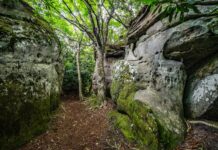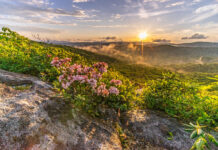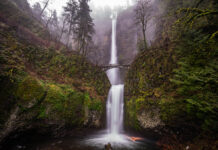I left the house at the crack of dawn on my camo bike, just able to see my way down the dirt road to the lake. I loaded my gear and launched my blind boat as quietly as I could so as not to disturb the wildlife community of the small flood control lake. The lake was shrouded in fog; the only sounds were the chorus of frogs scattered around its edges.
I slipped quietly across the lake, anticipating seeing something to photograph after the fog lifted.
As the sun rose higher yet still obscured by the fog, the frogs turned quiet as the nocturnal community retired. I stopped the boat in the still silence to witness the lake come to life. I spotted a Phantom Crane Fly that rests so lightly on the lake’s surface that it doesn’t break the surface tension. It was clothed in the morning dew.

A female Belted Kingfisher flew low along the lake’s perimeter to light on her favorite perch sprinkled with dry fish scales. She broke the silence with her characteristic rattling call.

A young whitetail buck saw me from the bank and slipped away into the fog without a sound.
The sun rose higher into the sky, burning away the fog and revealing the beauty of this refuge I found the year before.
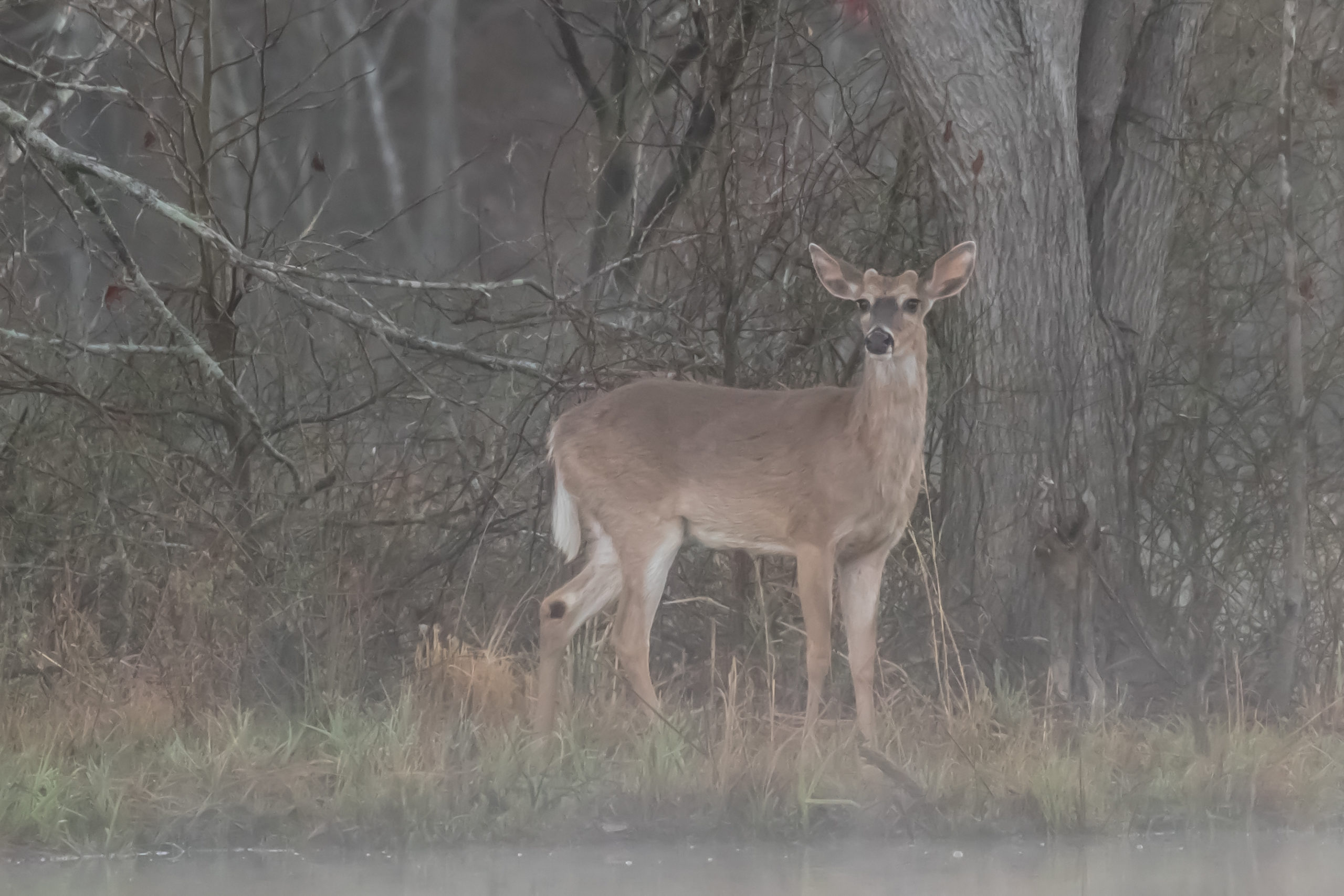
I noticed something red floating in the water at a distance. I lifted my camera, which doubles as a spotting scope, to see a trumpet vine bloom floating on the surface.

As I approached the bloom, I realized there were more in a near-straight line evenly spaced on the surface. They were distributed in a trail that tempted me to follow it to its origin. Through the night, a light breeze out of the west had blown and dispersed them as they fell from their vine.

I didn’t have to follow the trail, as it pointed to a tree leaning out over the lake supporting the vine full of blooms. This tree had character. The top had broken out, and a woodpecker had made its home in the trunk. What a beautiful front porch the woodpecker had. I had seen hummingbirds at other blooms in recent days, so I decided to anchor the boat to see if any would be coming to this vine full of blooms.

As I suspected, a female showed up to sip the nectar from the blooms.

I found getting images of the hummers at this tree was much more challenging than at a feeder. The blooms were scattered all over the tree from ten to twenty-five feet away. The hummers showed up at one bloom and then off to another in a split second while I tried to get focus. The light was still too low to use a shutter speed capable of freezing their fast-moving wings.

I repeatedly saw one female leave and go to a nearby red oak tree with no blooming plants nearby. She would disappear into the foliage, then return for more nectar sips.
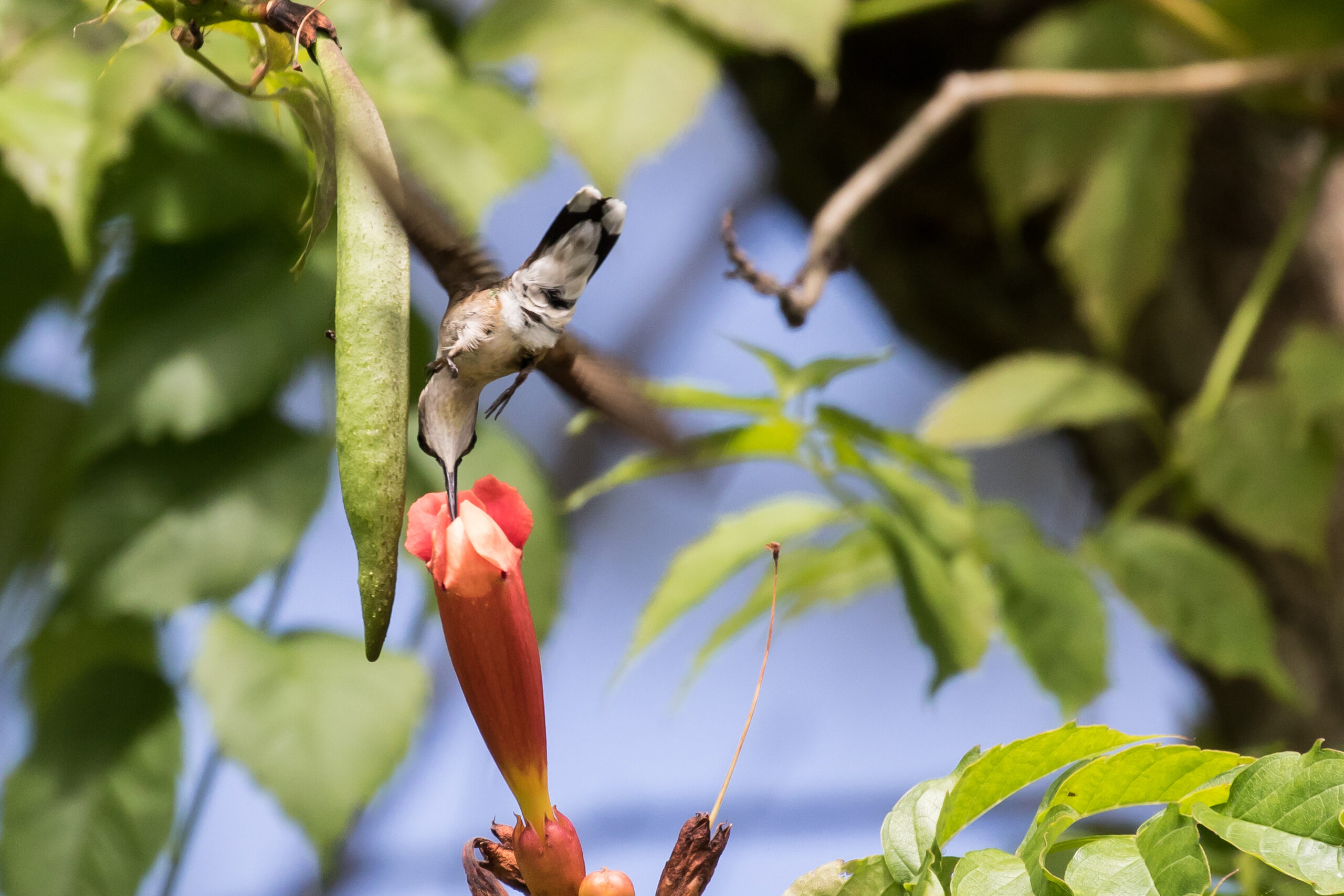
I went over to investigate on a hunch and, sure enough, discovered her nest. This was the climax of the summer.
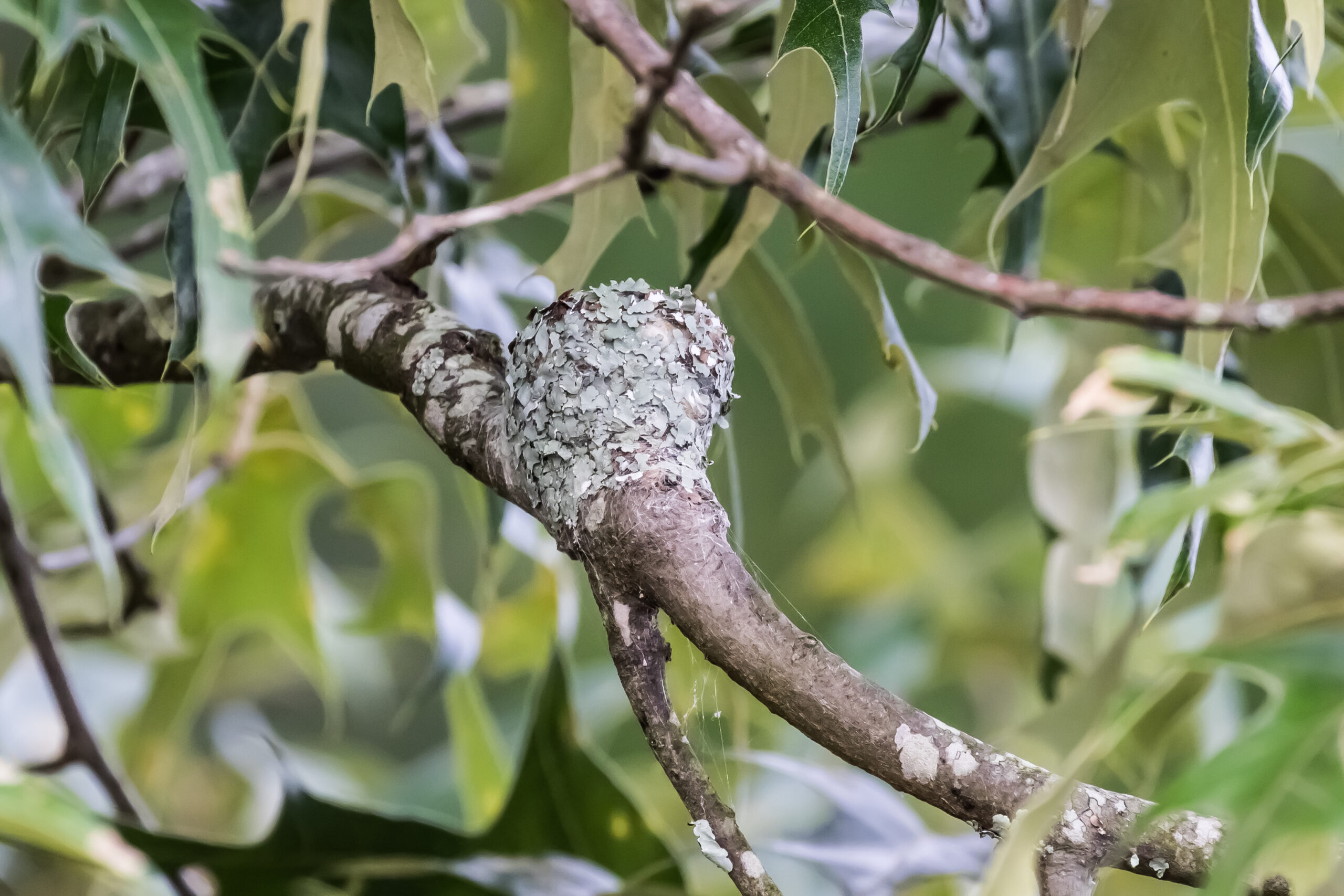
I researched and learned that hummingbird nests are made of “plant down” from dandelions and thistle fibers bound and secured to the tree limb with spider silk. The nest is then covered in lichens to shed water, which also happens to camouflage the nest, as you can see.

I didn’t want to disturb the mother-to-be, so I only paid an occasional visit to capture an image of her incubating the eggs, which I learned were the size of a black-eyed pea.

It wasn’t long until she could be seen feeding the nutritious mixture of nectar and tiny insects to her babies. My research said that the babies doubled in size three days after hatching and, at five days, had doubled again.
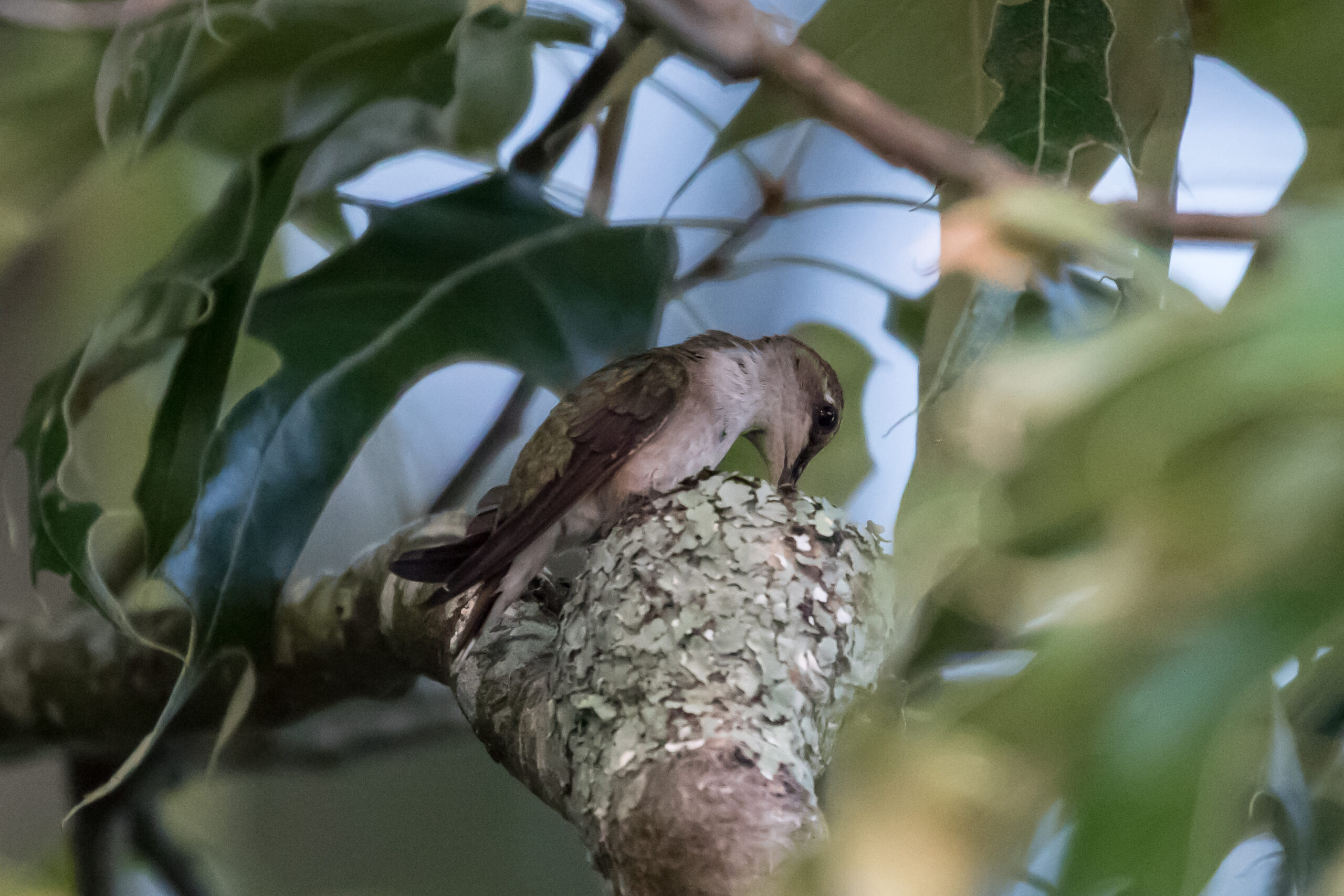 In just a matter of days, their beaks were already visible, sticking above the edge of the nest.
In just a matter of days, their beaks were already visible, sticking above the edge of the nest.

A week later, one had already fledged and the second could be seen easily above the nest.

Such a hard-working mom doing all this on her own.

Dedicated to my Lord Jesus Christ, who most beautifully colors all of his creation that I photograph. – Joe Berry



